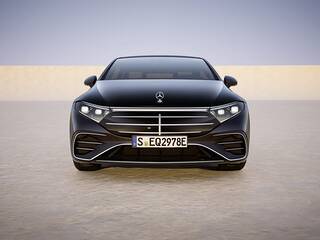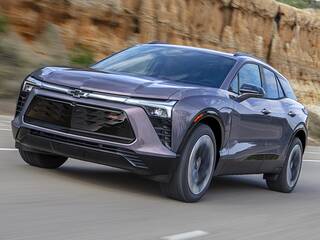Lucid Gravity SUV confirms Saudi-backed automaker's fatal flaw
So much oil money, so little curb appeal.

published Apr 18, 2025 | updated Apr 24, 2025

Key Takeaways
- The new 2026 Lucid Gravity SUV delivers the exceptional capabilities you'd expect from the company that builds the Air sedan.
- Unfortunately, the Gravity, starting around $95k for now, also shares the Air's acute lack of gotta-have-it styling.
What if I told you about an upstart car company that's going to change the way everyone thinks about EVs. I'm talking easy 400-mile or even 500-mile electric driving range. Four-figure horsepower and torque if you want it, breaking the 2-second barrier to 60 mph, with even the slowest model in the lineup needing just 4.5 seconds to get there. Sophisticated ride and handling like they've been building cars for decades, not just a few years.
Oh yeah, and although the CEO situation has been fluid as of late, no executive has behaved erratically enough to alienate a significant swath of the buying public.
Okay, you're saying. Sounds like the real deal. Let's see what these cars look like.
With fanfare, I pull out my phone and show you some photos. It's the first time you've laid eyes on the Lucid Air sedan and the recently introduced 2026 Lucid Gravity SUV.
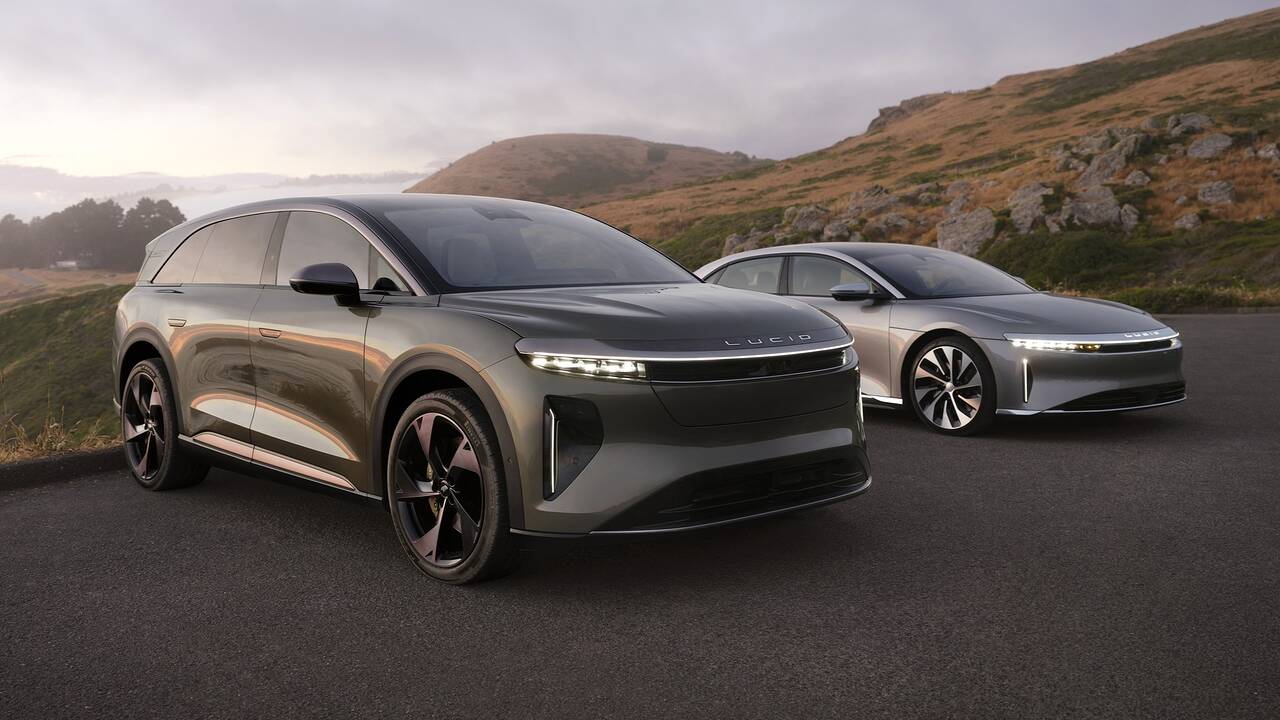
Record scratch. Sad trombone. You're suddenly struggling to think of something nice to say. As amazing as I made them sound — and they truly are amazing machines — you feel no visceral desire for either model based on its styling.
Could they still appeal to your rational side? Of course. But Lucid has obviously underestimated the power of that love-at-first-sight feeling that distills to, "I gotta have this car because it looks incredible." That makes each sale more of an uphill battle than it needed to be, posing an additional and possibly fatal threat to the company's long-term viability.
The Gravity was Lucid's chance at redemption
Let's briefly look at sales figures to get a sense of where Lucid stands. The Air sedan, introduced in mid-2022, has yet to move 1,000 units in a single month. Tesla notoriously doesn't break down sales by model in its reporting, but educated guesses about the Air's direct rival, the Model S, indicate that it has typically outsold the Air by wide margins, trailing off only in the past quarter or two.
In other words, we can assume that Tesla isn't quaking in its boots, notwithstanding repeated big-money injections by majority owner Saudi Arabia that have kept the Kingdom's fledgling EV-maker afloat.
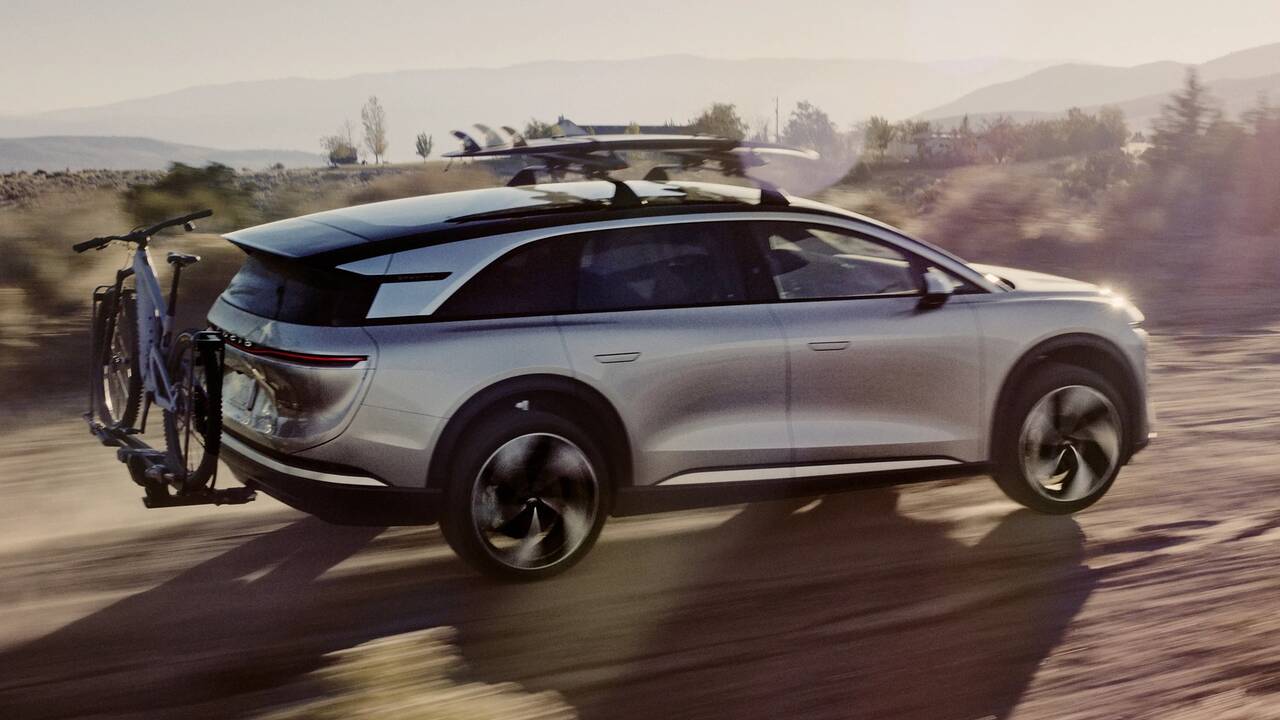
That's where the Gravity SUV comes in, theoretically, mirroring Tesla's strategy of starting with the Model S and then introducing the hefty three-row Model X. In fact, the Gravity Grand Touring ($94,900) — the only version available as of this writing — puts the Falcon-doored Tesla in its rearview with up to 450 miles of range, a whopping 115 miles better than the rangiest Model X, while also pumping out 828 (yes, eight hundred and twenty eight) horsepower.
So far, so ridiculously good, and let's not forget about the Gravity's minivan-like 120 cubic feet of cargo space and robust 6,000-pound towing capacity. Or its adjustable-height air suspension that does the steel-sprung Air's adaptive dampers one better. Or its tech-forward yet elegant cabin with adult-friendly accommodations in all three rows.
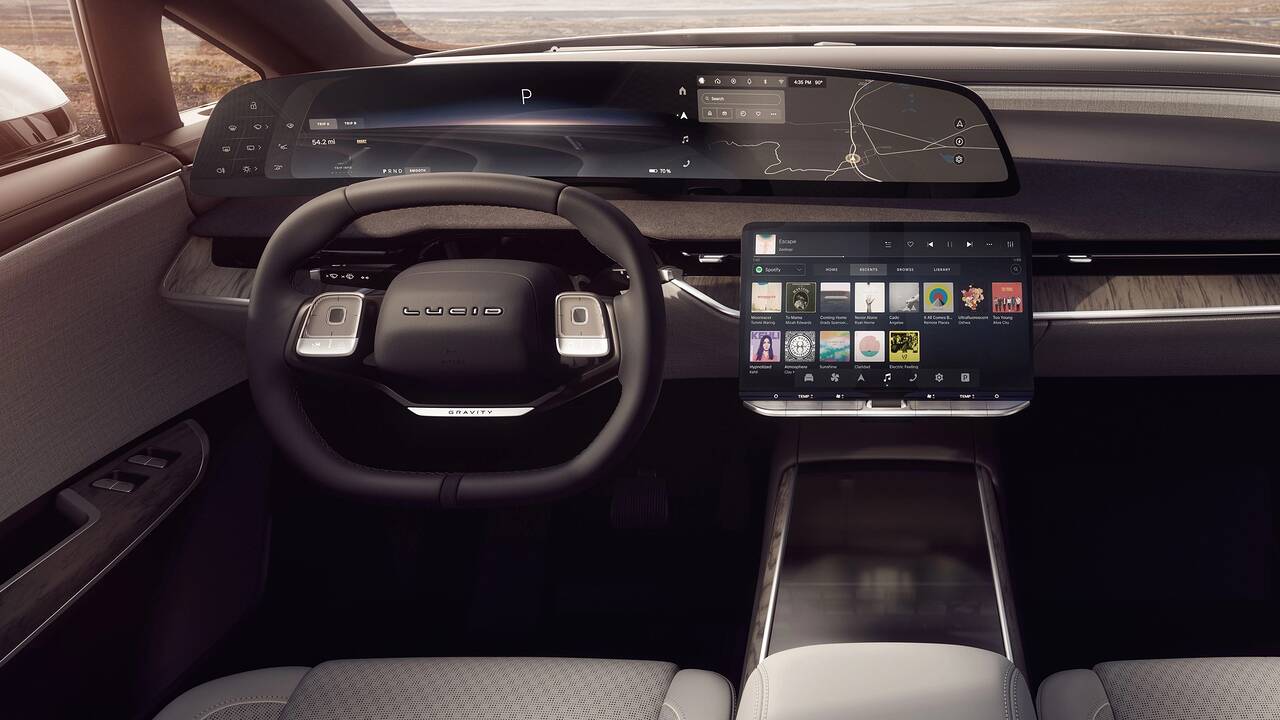
You get the point. This thing checks pretty much all the boxes except hardcore off-roading, where it's not going to challenge the genuinely capable Rivian R1S.
But where it really needed to challenge the Rivian is where it utterly fails to put up a fight:
In the styling department.
I personally know multiple R1S owners who were drawn in by its blocky, muscular design. It's got a little G-Wagen in it, stretched out to make room for the third row. Let's face it, people like SUVs in part because they make their drivers look and feel tough, and the R1S is a certified tough guy. It ain't backing down from nobody.
The Gravity, by contrast, looks like it was built to ace the wind-tunnel test, which it technically does, recording a remarkably low drag coefficient of 0.24 to the Rivian's 0.30 Cd. But while that may maximize powertrain efficiency, and therefore range, it also leaves the big Lucid looking like a descendant of the Mercedes-Benz R-Class and its American counterpart, the Chrysler Pacifica crossover.
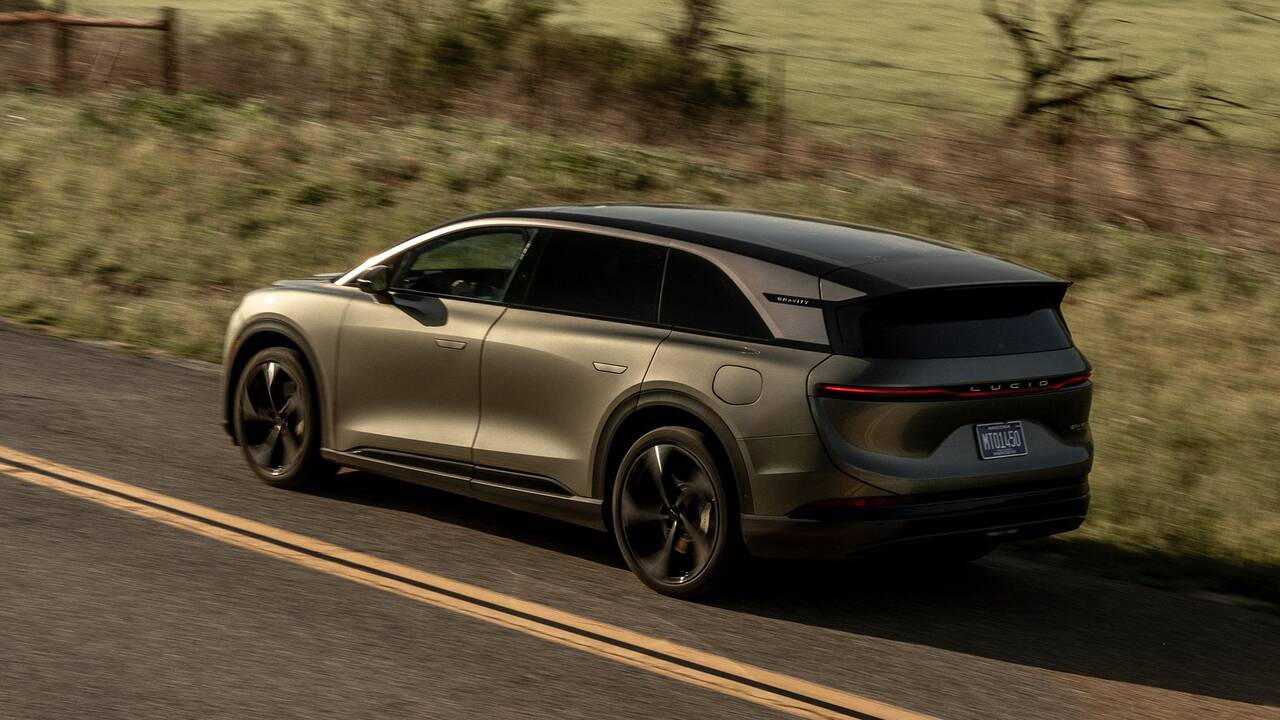
In case you're not aware, those two aren't exactly considered paragons of automotive design. One particular R-Class, the R63 AMG, maintains a cult following due to its 503-horsepower V8 (not bad for 2007), but this DaimlerChrysler duo is generally treated as more of a cautionary tale.
Why? Because, getting back to our chat at the outset, precisely zero human beings ever exclaimed, "I gotta have one of those — it looks incredible!"
The tragedy of the Gravity is that Lucid's decision-makers didn't demand a different outcome during the design phase. Consider that the R1S maxes out at 410 miles of range. What if Lucid had dialed back its wind-tunnel requirements and simply accepted range parity with Rivian, giving the designers room to add angularity and presence?
Imagine if Peter Rawlinson had said to the Gravity design team, "Get in a room and don't come out until you've drawn an SUV that a kid might want to tape to the wall."
By the same token, imagine if departed CEO Peter Rawlinson, an engineer himself who oversaw so many extraordinary achievements during his tenure, had said to the Gravity design team, "Get in a room and don't come out until you've drawn an SUV that a kid might want to tape to the wall. We'll sort out the aerodynamics later."
It's about priorities, right? My read on the Gravity is that the design team probably did the best they could with the brief they were given, which clearly put efficiency on a pedestal. Yes, range sells EVs — to a point. But once you're in the 400-mile club, I suspect the law of diminishing returns kicks in hard. People would surely give up 10 percent of those miles without a second thought for an SUV with awesome styling. It's a much harder task to convince them to buy a six-figure luxury SUV in spite of the way it looks.
But Teslas don't look good either!
Right, and it hasn't held them back. That doesn't surprise me, though. For one thing, the value-oriented Teslas — Model 3 and Model Y — are serving a different audience. If you're getting a great deal, you're willing to compromise on lesser concerns like design, which explains why the Model Y in particular has dominated global EV sales despite its awkward proportions.
As for the Model X, it's perhaps the ugliest of all, but it was also the first three-row EV and remained the only option for many years, so you can understand why folks gave its egg-like profile a pass.
The Cybertruck? Not pretty, but it certainly makes a statement, which is what a lot of six-figure shoppers are going for.
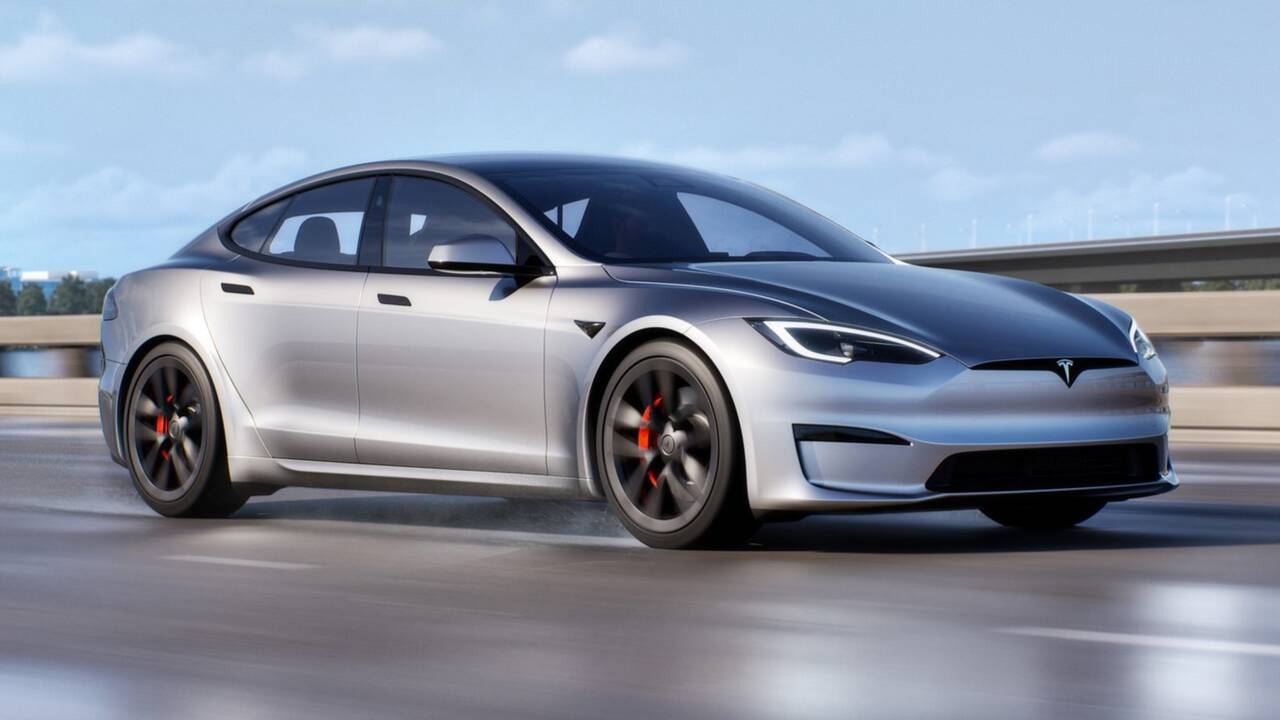
And the flagship Model S is actually a wonderfully styled car, in my opinion. Otherwise, I doubt so many S-Class drivers and the like would have been happy to switch into one over the past decade-plus.
You also have to remember Tesla's massive first-mover advantage. If you get there first and plant your flag on the mountaintop, you have more leeway than your future challengers. The fact that most Teslas are less than stunning doesn't mean Lucid can overcome the same weakness.
MotorDonkey says
Styling is a great way to separate yourself from the pack, especially if you're relatively new to the game. Think about the Kia Telluride's meteoric rise in the midsize three-row SUV segment, for example. It doesn't hurt that the Telluride is an excellent all-around vehicle, but there's no way it would have become that popular without its debonair appearance.
On the other hand, styling can seal your fate if you don't get it right, à la R-Class and Pacifica. Lucid needs to take a page out of Kia's book, stat, if it's going to get enough traction to survive in a difficult EV marketplace.
(Editor's Note: This article was updated on 4/24/25 to add a link to our Lucid Air Pure review in the first paragraph.) ⛐ md

by Josh Sadlier
Publisher and Donkey-in-Chief
Josh has been reviewing cars professionally since joining Edmunds.com fresh out of grad school in 2008. Prior to founding MotorDonkey, he spent 15 years shaping Edmunds' expert automotive content in various capacities, starting as an associate editor and ultimately serving as a senior editor before wrapping up with a five-year term as the company's first-ever director of content strategy. Josh is a card-carrying member of the Motor Press Guild and a lifelong car nut who has driven, compared and critiqued thousands of cars in his career. Helping people find their perfect car never gets old—seriously!
 Let's make it official!
Let's make it official!
Be a good donkey and we'll deliver delicious car news straight to your inbox, spam-free forever.

